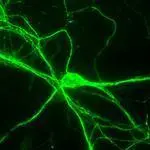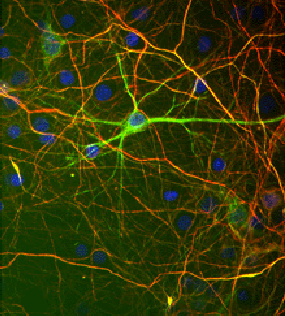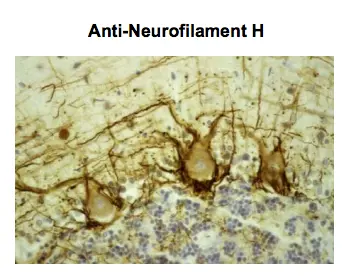NF-H antibody [GT114]
GTX634289
ApplicationsImmunoFluorescence, Western Blot, ImmunoCytoChemistry, ImmunoHistoChemistry, ImmunoHistoChemistry Frozen, ImmunoHistoChemistry Paraffin
Product group Antibodies
TargetNEFH
Overview
- SupplierGeneTex
- Product NameNF-H antibody [GT114]
- Delivery Days Customer9
- Application Supplier NoteWB: 1:500-1:3000. ICC/IF: 1:100-1:1000. IHC-P: 1:100-1:1000. IHC-Fr: 1:100-1:1000. *Optimal dilutions/concentrations should be determined by the researcher.Not tested in other applications.
- ApplicationsImmunoFluorescence, Western Blot, ImmunoCytoChemistry, ImmunoHistoChemistry, ImmunoHistoChemistry Frozen, ImmunoHistoChemistry Paraffin
- CertificationResearch Use Only
- ClonalityMonoclonal
- Clone IDGT114
- Concentration1 mg/ml
- ConjugateUnconjugated
- Gene ID4744
- Target nameNEFH
- Target descriptionneurofilament heavy chain
- Target synonymsCMT2CC, NFH, neurofilament heavy polypeptide, 200 kDa neurofilament protein, NF-H, neurofilament triplet H protein, neurofilament, heavy polypeptide 200kDa
- HostMouse
- IsotypeIgG1
- Protein IDP12036
- Protein NameNeurofilament heavy polypeptide
- Scientific DescriptionNeurofilaments are type IV intermediate filament heteropolymers composed of light, medium, and heavy chains. Neurofilaments comprise the axoskeleton and functionally maintain neuronal caliber. They may also play a role in intracellular transport to axons and dendrites. This gene encodes the heavy neurofilament protein. This protein is commonly used as a biomarker of neuronal damage and susceptibility to amyotrophic lateral sclerosis (ALS) has been associated with mutations in this gene. [provided by RefSeq]
- Storage Instruction-20°C or -80°C,2°C to 8°C
- UNSPSC12352203
References
- Changes of Functional, Morphological, and Inflammatory Reactions in Spontaneous Peripheral Nerve Reinnervation after Thermal Injury. Yu X et al., 2022, Oxid Med Cell LongevRead more
- Bone marrow derived mast cells injected into the osteoarthritic knee joints of mice induced by sodium monoiodoacetate enhanced spontaneous pain through activation of PAR2 and action of extracellular ATP. Habuchi H et al., 2021, PLoS OneRead more


![IHC-P analysis of human brain tissue using GTX17114 NF-H + NF-L antibody [2F11].](https://www.genetex.com/upload/website/prouct_img/normal/GTX17114/GTX17114_20191203_IHC-P_22_w_23060620_388.webp)
![IHC-P analysis of human brain tissue using GTX20910 NF-H + NF-L antibody [2F11] (ready-to-use).](https://www.genetex.com/upload/website/prouct_img/normal/GTX20910/GTX20910_20191203_IHC-P_65_w_23060620_575.webp)
![FACS analysis of HEK293 cells using GTX57165 NF-H (phospho) antibody [NE14]. Blue : Primary antibody Red : Isotype control](https://www.genetex.com/upload/website/prouct_img/normal/GTX57165/GTX57165_20200115_FACS_96_w_23061123_216.webp)
![ELISA analysis of antigen using GTX60650 NF-H antibody [8H10]. Black : Control antigen 100ng Purple : Antigen 10ng Blue : Antigen 50ng Red : Antigen 100ng](https://www.genetex.com/upload/website/prouct_img/normal/GTX60650/GTX60650_20170912_ELISA_w_23061123_507.webp)


